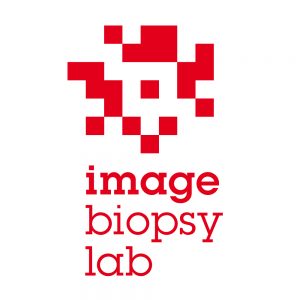Read how IBL’s KOALA AI-driven application can help improve assessment and diagnosis of many musculoskeletal conditions and impact patient care. This FDA-cleared solution will support physicians in detecting signs of knee osteoarthritis based on standard joint parameters, and help track disease progression. It is available for review on the Nuance AI Marketplace for Diagnostic Imaging, and will be integrated with Nuance’s next-generation reporting platform, PowerScribe One.
As the population ages, arthritis and other musculoskeletal diseases are an increasing cause of physician visits and health care spending. With increased prevalence comes an increased burden for rapid, precise diagnosis and staging, as well as an ability to predict future disability. Unfortunately, interpreting orthopedic images can be laborious. There is a need for standardization and simplification while providing quantitative disease parameters to support treatment decisions. Having precise measurements is the missing link to tracking the slow progression of degenerative diseases.
Dr. Richard Ljuhar, CEO and co-founder of ImageBiopsy Lab (IBL), shares his thoughts about how IBL’s AI-driven musculoskeletal imaging algorithms aim to improve assessment and diagnosis of a range of musculoskeletal conditions, including osteoarthritis (OA), osteoporosis, and rheumatoid arthritis. The goal is driving timely and appropriate interventions to reduce morbidity and disability – relieving pain and improving patients’ lives.
Interpreting musculoskeletal images is a challenge due to the lack of objective analysis methods and standardized digital documentation of radiographic changes. Because of these shortcomings, diagnosis and predictive assumptions show significant inter-rater variabilities and are thus often unreliable. IBL uses state-of-the-art artificial intelligence technology to efficiently address these challenges, relieving physicians and researchers of time-consuming image analysis tasks, while at the same time improving diagnostic accuracy and predictive capability.

Q&A
Jonathon Dreyer: Tell us about your business – when and how you started and your development journey.
Richard Ljuhar: ImageBiopsy Lab (IBL) was founded by a team of experienced professionals and specialists in medical technology and AI, along with board-certified doctors in orthopedics and radiology. Based on personal experience of the management team, plus intensive discussions, brainstorming, and surveys of medical users, core elements of our AI modules have been successively worked on since 2012. IBL was incorporated in 2016 and began implementing its business strategy. The initial focus has been on applying deep-learning methods to knee osteoarthritis (OA), and this was our first use case. But our modular platform technology is designed to be applicable to any orthopedic imaging data, so we have expanded beyond knee OA to other musculoskeletal disease applications.
JD: What AI models do you have and what do they do?
RL: The focus of IBL is on digital X-ray and musculoskeletal diseases, with artificial intelligence-driven solutions for anatomical regions such as the knee, hand, hip, whole leg, and spine. Our FDA 510k cleared module KOALA, (Knee Osteoarthritis Labeling Assistant), supports physicians in detecting signs of knee osteoarthritis based on standard joint parameters and OARSI criteria of standing radiographs of the knee. FDA 510k pending PANDA (Pediatric Bone age and Developmental Assessment) supports an objective and standardized determination of pediatric bone age. HIPPO (Hip Positioning) also 510k pending, supports objective and standardized measurement of the most important hip angles based on digital x-rays.
JD: What’s the big “Aha” moment when you first show users what your AI models can do for them?
RL: A remark from Peter Steindl, MD, an orthopedic surgeon, sticks in my mind. He said, “I guess my biggest “Aha moment” was that I realized the potential to measure and compare sclerosis, joint space narrowing, and OA-grades in an objective way in a particular patient over a couple of years. I think this device/software might be very helpful in finding the optimal timing for planning a joint replacement surgery of the patient’s knee.”
JD: What challenges or needs did you see that drove you to focus on this?
RL: After years of experience and discussions with medical experts, IBL identified that orthopedic diagnoses could benefit immensely from AI-driven solutions. Workflows are time-consuming and elaborate with interpretations often subjective and difficult to reproduce. Additionally, image reading and interpretation often hasn’t changed significantly since the introduction of radiography. The need to bring musculoskeletal/orthopedic radiology into the digital age drove our motivation to change the status quo. IBL’s software offers simplification and standardization while at the same time providing quantitative disease parameters to support treatment decisions.
JD: What’s the number one benefit you offer?
RL: While we support medical experts and their patients in numerous areas during the diagnostic pathway, we see the greatest benefit of our solutions in automation and in consistent documentations of radiological parameters. Big data and artificial intelligence cannot replace physicians, but they can relieve them of time-consuming routine tasks. This should allow medical experts to invest their time where it is most needed—with their patients!
JD: Are there any stories you can share about how your AI model(s) drove measurable patient care outcomes?
RL: Our experience and that of our customers has shown that through our solutions there is a higher level of agreement between physicians, improved patient communication, more appropriate and timely therapy decisions, and an increase in patient loyalty. In fact, we even had patients approaching us directly asking if we can run the digital analysis of their X-rays as they wanted to get an accurate assessment of their disease progression.
JD: What benefits does Nuance and its AI Marketplace for Diagnostic Imaging bring to your users? What problems does the marketplace and integration into Nuance’s workflow solve?
RL: IBL and Nuance deliver their core value at the most critical interface of the radiology workflow: Translating the image information to a report. Our AI solutions facilitate this transition by providing quantitative and objective measurements. Thus, the flawless integration of our AI output to pre-fill reporting templates via Nuance delivers the most value to existing workflows. Being delivered at the heart of where radiologists’ time and decision making matters the most is what is streamlined by Nuance while proving a scalable IT infrastructure and customer base to build a win-win-win situation for IBL, Nuance and the physicians benefiting from time-saving and quality improvements.
JD: What has your experience been working with the Nuance team?
RL: We at IBL especially like the forward-thinking design of how AI results are injected to existing reporting workflows which made it highly attractive for us to collaborate. The early designs of the Nuance AI-driven solutions already reflect the experience and professionalism of a company with tremendous domain knowledge and ability to deliver the promised value of AI for physicians. Nuance’s responsive support allowed IBL to quickly ramp up demos and use cases, and we are very happy to be part of the family.
JD: What is your vision for how your solution(s) will evolve over the next 5 years?
RL: IBL will expand its portfolio of fully automated AI solutions for musculoskeletal radiology where automation matters the most – time-saving and objective outcome measures on standardized, high-volume tasks that enable easier comparison between repeated visits of the same patient. With this, the workload of the orthopedist and radiologist can decrease, while the quality of results can increase. And because precise measurements are the missing link to tracking the slow progression of certain MSK diseases, radiologists using IBL’s solutions deliver the perfect service to their referring orthopedists, who can apply IBL’s outcome measures to tailor personalized treatments and monitor their efficacy over time. The longitudinal structured data of our AI solutions supports powerful prediction models which use our AI results and clinical data to predict the future progression of the patient’s condition. This is possible due to IBL’s decade-long experience of building image processing algorithms and experience to transform immense datasets to actionable clinical decision support.
JD: In one sentence, tell us what you think the future of medicine will look like.
RL: Automation and standardization will lead to an increasing amount of structured data which in turn will lead to a growing number of AI-applications in the years to come.
Learn more
To learn more about ImageBiopsy Lab, please visit www.imagebiopsylab.ai







